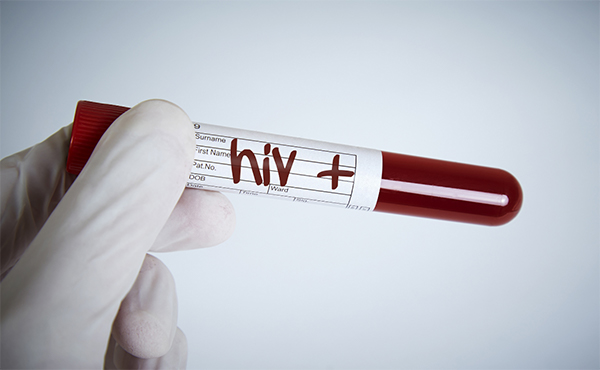States Using Policy to Remove Barriers to HIV Testing
June 22, 2022 | Amelia Poulin
 National HIV Testing Day is observed each year on June 27 and encourages people to get tested and know their HIV status. In fact, an estimated 40% of new infections can be attributed to people who do not know they have HIV. For people with undiagnosed HIV, testing is the first step in maintaining a healthy life and preventing HIV transmission.
National HIV Testing Day is observed each year on June 27 and encourages people to get tested and know their HIV status. In fact, an estimated 40% of new infections can be attributed to people who do not know they have HIV. For people with undiagnosed HIV, testing is the first step in maintaining a healthy life and preventing HIV transmission.
There are some groups that are disproportionately impacted by HIV. For example, gay, bisexual, and other men who have sex with men accounted for two-thirds of new infections in 2020, despite making up 2% of the adult population. Additionally, in 2020, people who identify as Black/African American made up 57% of individuals living with HIV, despite making up 12.6% of the population. Systemic factors such as racism, HIV-related stigma, and homophobia contribute significantly to these disparities, and have been shown to serve as a barrier to routine HIV testing, pre-exposure prophylaxis (PrEP) uptake, and linkage/retention in care.
Recent legislation regarding HIV testing also speaks to the prioritization of this important topic. Legislative themes include consent for HIV testing, site-specific processes to facilitate routine HIV screening, and increasing access to HIV testing.
Addressing Consent for HIV Testing
Testing is a proven HIV prevention intervention. Efforts to increase access to HIV testing in high-prevalence areas help maximize the impact of allocated resources. Furthermore, there are several cost effective and stigma-reducing policy interventions to address health disparities, including expanding routine/opt-out HIV screening.
Since many people who are at higher risk for HIV infection do not receive an annual HIV test, despite having seen a primary care provider, CDC recommends that patient consent for standard preventative tests be inclusive of HIV testing, and separate written consent for HIV testing—sometimes referred to as an “opt-out” approach—should not be required.
At least four states introduced bills related to obtaining consent for HIV testing. For example, Massachusetts bill S 1405 would allow consent for medical care to be inclusive of consent to receive an HIV test, and further, the test results may be included in the patient’s electronic medical records without requiring additional written consent. Arizona enacted HB 2433 repealing section 36-663 of the state code, and removing the requirement for informed consent for an HIV-related test conducted by a health care provider.
Facilitating Routine HIV Screening With Site-Specific Processes
CDC also recommends that every person between the ages of 13 and 64 be screened for HIV at least once in their lifetime, and those at higher risk be re-tested at least once per year. However, according to a 2019 MMWR, less than 40% of adults have ever been tested for HIV, demonstrating a need for improved efforts around routine screening.
At least four states have introduced bills that affect how testing is administered in specific sites, which aim to facilitate routine HIV testing. California bill AB 835 would require every patient who is 12 years or older who has their blood drawn in a hospital emergency department to be offered an HIV test, unless they had received a test at that hospital in the past 12 months. Similarly, in Connecticut HB 5190 proposed requiring certain healthcare providers to offer HIV-related tests to all patients 13 years and older at least once annually. On the other hand, New Jersey S 1065 proposes focusing efforts in high-prevalence areas, by requiring laboratories to offer HIV screening to patients living in areas with high HIV prevalence.
Increasing Access to HIV Testing
Social, economic, and cultural hurdles often prevent individuals from receiving an HIV test. Barriers might include stigma or discrimination by a healthcare provider or peers, lack of access to healthcare, including limited transportation funds to cover copayments, and/or the inability to take time off of work. At least four states proposed bills to help reduce barriers for an individual to receive an HIV test.
In New York, where National HIV Testing Day has been memorialized by proclamation, bill A 4435 would allow a leave of absence for employees to receive an HIV test, and bill S 8187 would require insurance coverage for home test kits for sexually transmitted diseases, including HIV. At least two states introduced bills outlining the required training and knowledge required to conduct an HIV test. New York bill A 3864 (in committee) and California bill SB 306 (enacted) both modify requirements for provider HIV testing training by allowing an individual to demonstrate sufficient knowledge to conduct the test.
States are taking action to improve access to HIV testing and align with CDC recommendations. Policy change is a critical step to increase access to testing, but to achieve effective policy implementation, it is essential to also address stigma around HIV testing. One way to do this is through sharing science-based, culturally appropriate messages about this topic. CDC offers key resources in this area, including:
- Let’s Stop HIV Together campaign is an evidence-based, audience-researched campaign with a wide array of resources available for use by partners on testing, prevention, treatment, and stigma reduction. (Contact CDC to co-brand and localize the materials.)
- Other resources specific to testing day on CDC’s NHTD webpage.
To learn more about what jurisdictions are doing to end the HIV epidemic, check out ASTHO Policy Watch 2022: Ending the HIV Epidemic.